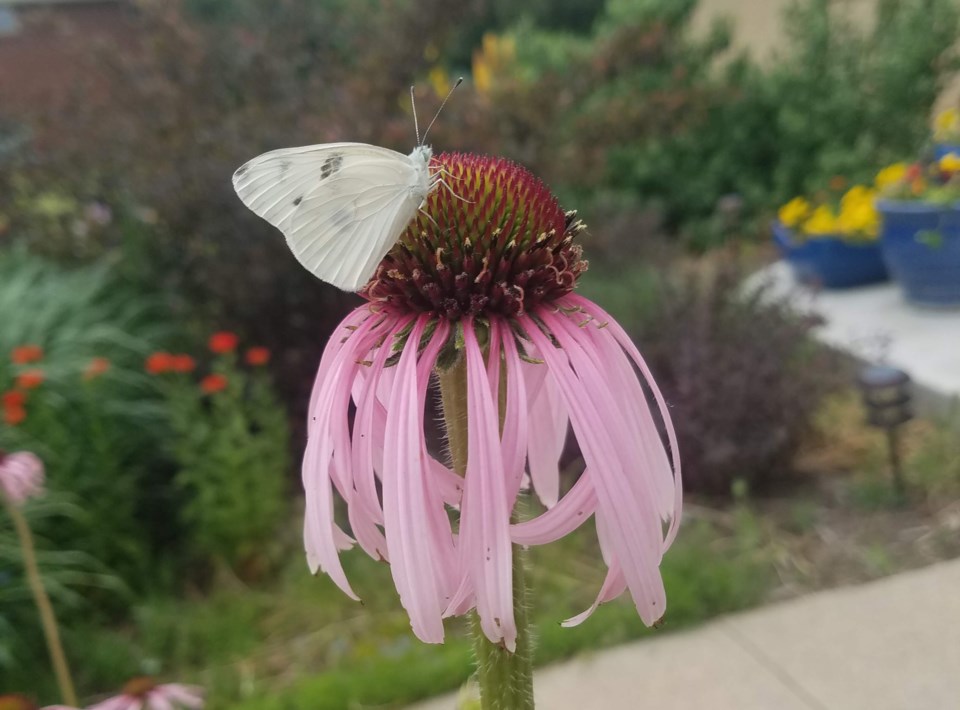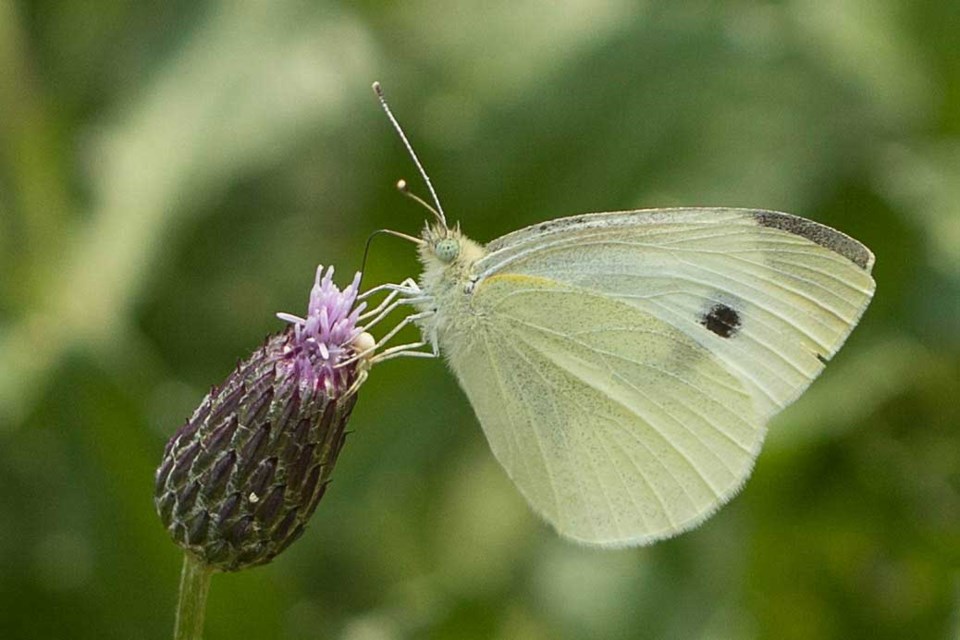After this past winter, everyone I talk to is ready for spring – we dream of green leaves, warmer temperatures, more time outside. We’re not the only creatures ready to get out and take advantage of fresh air and more pleasant weather.
As we emerge from our own winter hibernation, we also see our fellow animals stretching their legs and fluttering their wings. Some of our first butterflies to brave the season are the cabbage white (Pieris rapae) and the checkered white (Pontia protodice) butterflies.
From early spring until frost, these little white butterflies are probably the most common ones we see in our gardens and parks. These members of the Pieridae, or sulfur family, endure winter as pupa tucked away in vegetation, then emerge to frolic over weedy spaces, vegetable patches, and along drainages and waterways, like tiny bits of clouds descended to earth.
Cabbage white butterflies lay their eggs on – surprise! - plants in the cabbage family, and their caterpillars greedily eat the leaves, flowers, and stems, leaving behind kale, cabbage, broccoli, and cauliflower that looks more like Swiss cheese.
Cabbage white butterflies, brought over to North America accidentally from Europe in the 19th century, are the only butterfly we regard as an agricultural pest, mostly because they are so good at reproducing. A female cabbage white butterfly can lay over 500 eggs in her lifetime, and they have multiple generations per year, reproducing until late fall. That means a lot of caterpillars, especially where cabbage relatives are common. One female may be the ancestor of millions of descendants in just a few generations!
However, not all white butterflies pose a threat to your future cole slaw and sauerkraut harvests. Checkered white butterflies are native to North America and prefer to lay their eggs on plants like the Rocky Mountain beeplant (Cleome [Peritoma] serrulata), as well as on cabbage relatives.
Their life cycle is like that of their European cousins, but you can tell them apart by the additional smoky smudges on the edges of their forewings. Males of this species will find areas with suitable host plants then “patrol” flat, sunny areas nearby for females.
These butterflies are good fliers, known to manage over five miles in one day. There are other similar species as well; depending on where you are in the state, you might find pine whites, western whites, and others. The wing pattern markings of white butterflies can vary depending on location, genetics, and age, making members of this group sometimes hard to tell apart in the field.

These butterflies all provide important food for birds and other wildlife, while also serving as pollinators. Pollinators are key to our way of life – they play a fundamental role in providing us the food we eat and the health of our environment. These ecosystem heroes, along with other invertebrate species need our help to survive, and one of the best things you can do is to add habitat for checkered whites and their relatives.
Planting a diversity of native wildflowers that bloom from spring to fall will fuel the flight of adults. Including Rocky Mountain bee plant, an annual wildflower that grows easily from seed and attracts many pollinators, ensures that the native checkered white butterflies can reproduce. Avoiding using chemical pesticides in your garden also promotes the health of these creatures since they are extremely sensitive to chemical pollution. These landscape practices will help other pollinators and wildlife species, too!
Even if you don’t have a garden, there are many ways that you can celebrate spring, shake off the winter blahs, and make a difference for our world and the incredible creatures that call it home. Community science is a great way for people to learn more about nature and wildlife and often doesn’t require much more than an observant eye, a little training, and time to enjoy the outdoors while helping the environment.
There are multiple projects to choose from, suitable for different interests and skill sets, and all providing great scientific value. Without the support of people within the community, scientists and land managers don’t have the information they need to restore habitat and protect wildlife. In a world that often feels like we are growing further apart, community science allows us to come together towards a common goal, to help learn and protect the incredible wildlife that calls Colorado home. And participating in these volunteer give you an excellent excuse to wake up from winter and make the most of our brief and glorious spring season.



